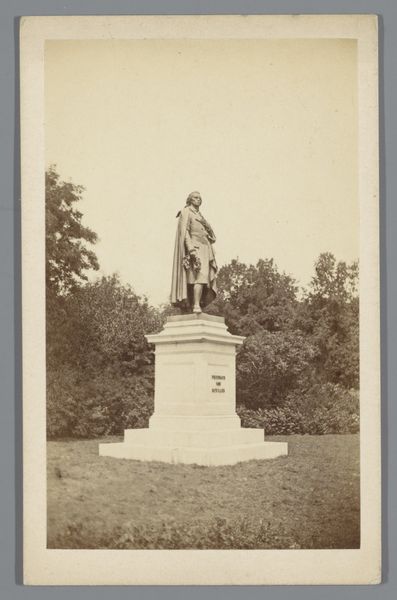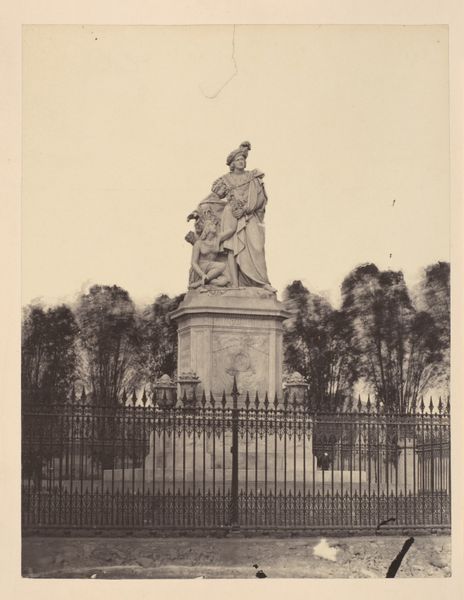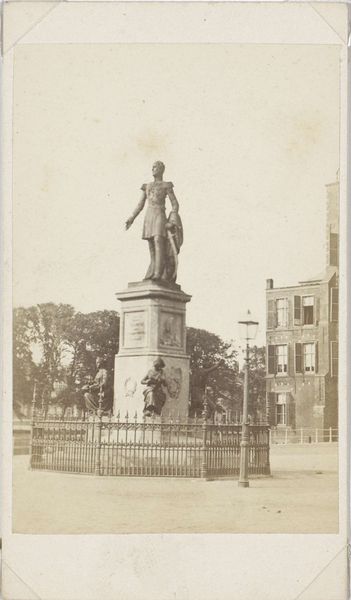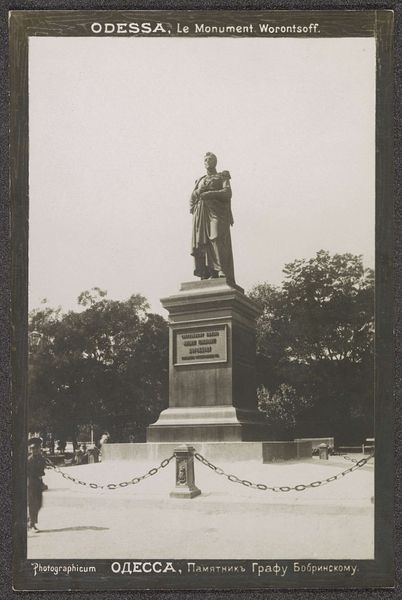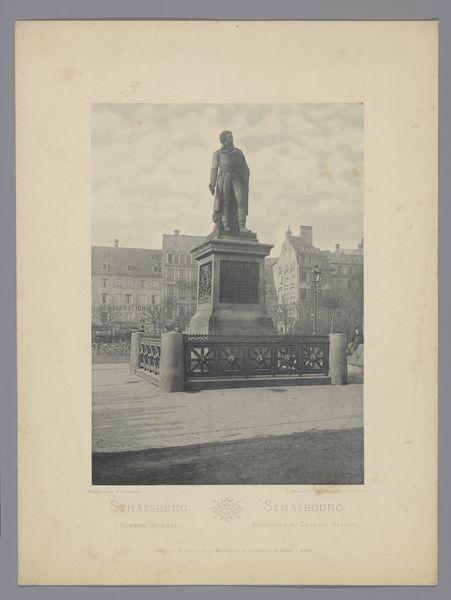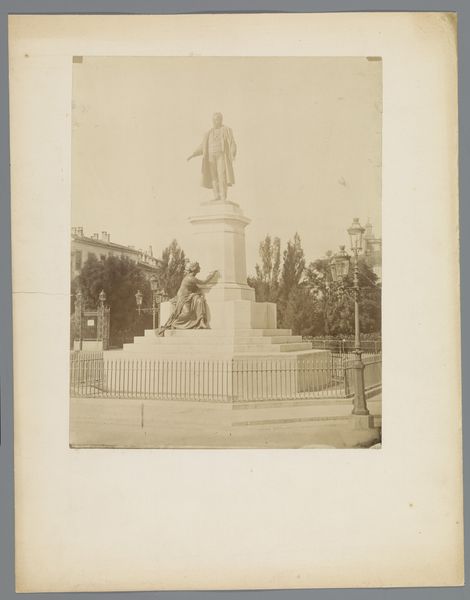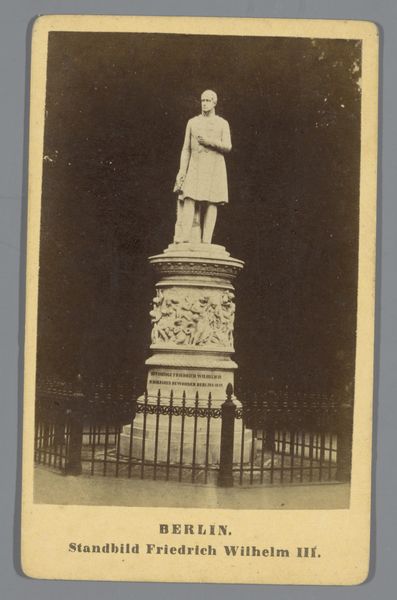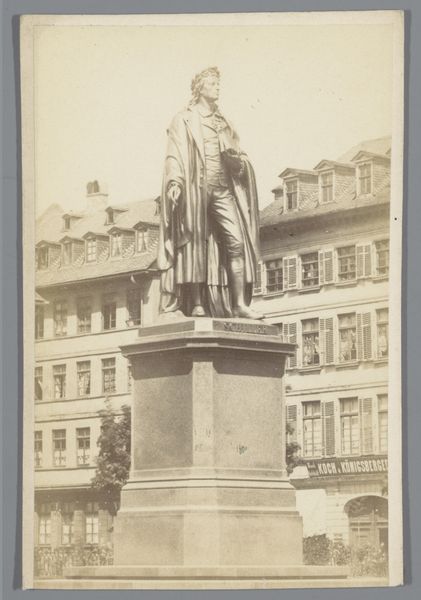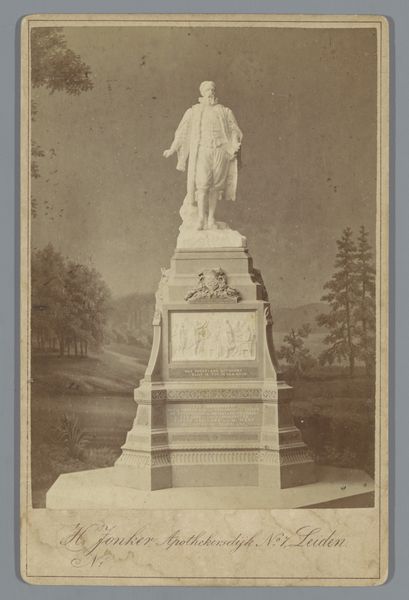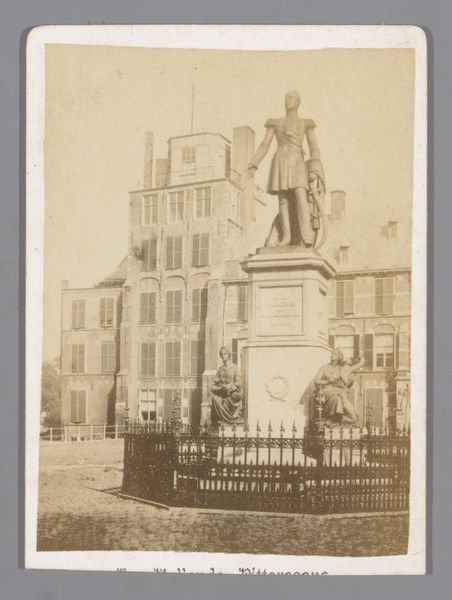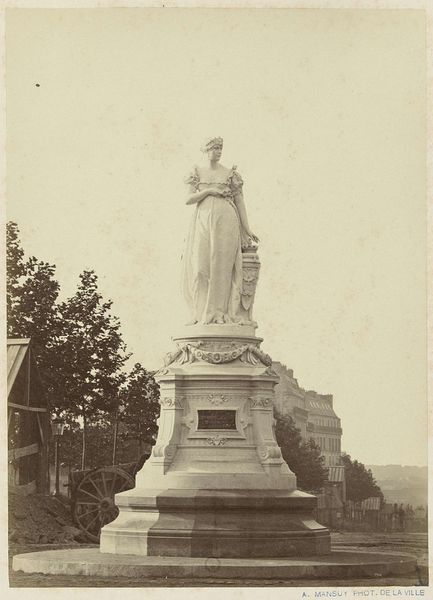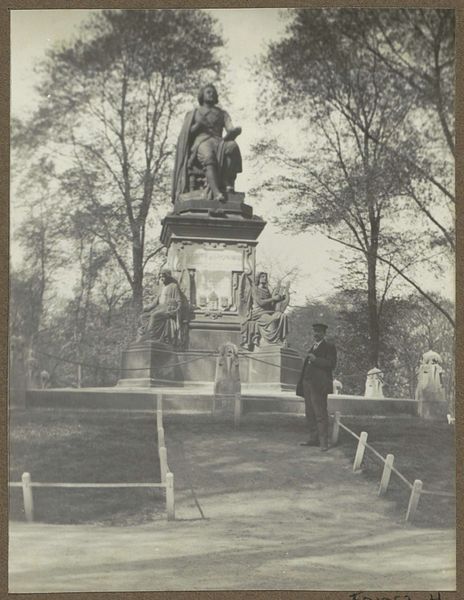
bronze, photography, sculpture
#
portrait
#
16_19th-century
#
war
#
landscape
#
bronze
#
photography
#
sculpture
#
united-states
Dimensions: 7.3 × 5.4 cm (image); 10.1 × 6.1 cm (card)
Copyright: Public Domain
Editor: This photograph captures the "Statue of Commodore Matthew Perry," dating between 1850 and 1889. I see this towering bronze figure standing very authoritatively with trees in the background, making me feel somewhat removed from its subject. How do you interpret this work, given its subject matter? Curator: Considering Perry's role in the forced opening of Japan, this sculpture and its prominent display raise crucial questions about historical narratives and whose perspectives are valorized. Do you see it as a simple commemoration, or do you think it prompts a deeper inquiry into American imperialism? Editor: It certainly doesn't feel simple anymore knowing that context. So, its creation must have been at the height of this perspective? Curator: Absolutely. It’s likely commissioned during a period of intense nationalistic fervor, idealizing figures like Perry and overlooking the violent implications of their actions on other cultures. The choice of bronze as a permanent medium further emphasizes this sense of uncritical commemoration. The location is key: what message does placing a monument like this in a public space send? Editor: I never would have thought of the medium reinforcing the message like that, it does add a sense of permanence. Curator: It's important to acknowledge the perspectives absent from this narrative. We should ask: Who funded this project, and who was excluded from its conception and celebration? Exploring these absences is key to understanding the complexities of historical memory. Editor: Seeing it in that new light encourages critical questioning, not just passive viewing. I understand that it can perpetuate potentially biased viewpoints on American expansionism now. Thank you! Curator: I agree; hopefully, by critically engaging with these representations, we can challenge dominant narratives and foster a more inclusive and nuanced understanding of history.
Comments
No comments
Be the first to comment and join the conversation on the ultimate creative platform.
